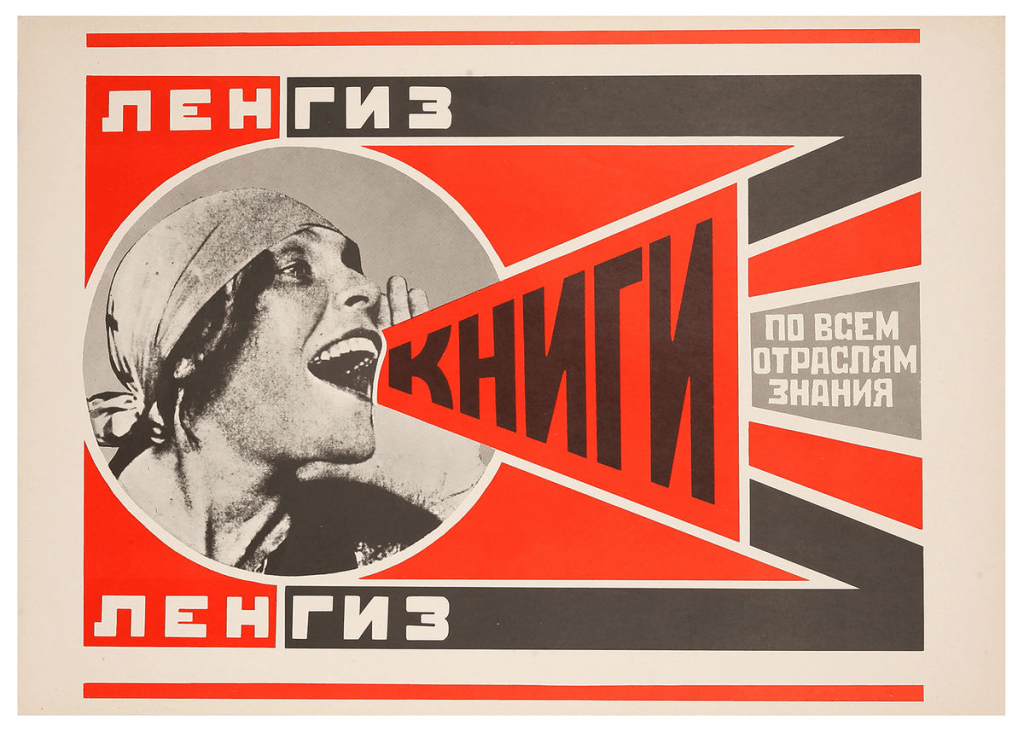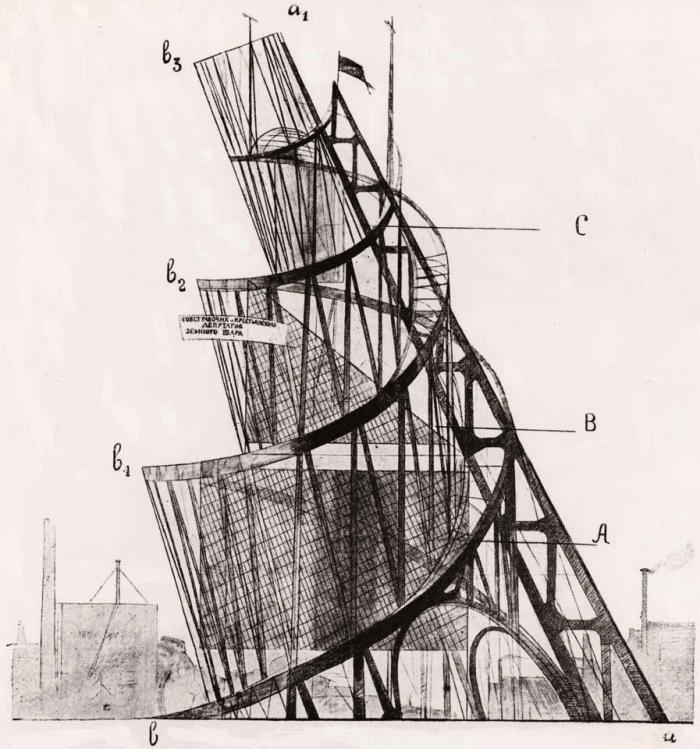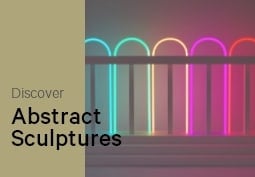Articles and Features
Art Movement: Constructivism

By Shira Wolfe
“WE DECLARE UNCOMPROMISING WAR ON ART!”
– Aleksei Gan
In 1913, the Russian artist Vladimir Tatlin paid a visit to Picasso’s studio. What he saw there were Picasso’s experiments with collaged objects (papiers collés). This encounter profoundly influenced Tatlin, who embarked on an exploration of his own in the collage medium, creating abstract, three-dimensional collages made of metal and wood. He exhibited these alongside Kasimir Malevich’s Suprematist paintings at the “Last Futurist Exhibition” that year. This marked the beginning of Constructivism, an art movement in which the artists were interested in construction. Art was to be built.
What is Constructivism?
In Constructivism, the role of the artist was re-imagined – the artist became an engineer wielding tools, instead of a painter holding a brush. For the Constructivists, artworks were part of a greater visual program meant to awaken the masses and lead them towards awareness of class divisions, social inequalities, and revolution. The Constructivists believed that art had no place in the hermetic space of the artist’s studio. Rather, they thought that art should reflect the industrial world and that it should be used as a tool in the Communist revolution.
Key dates: 1915-1940
Key regions: Soviet Union, Germany
Key words: Abstraction, geometric forms, social purpose, Communism, revolution
Key artists: Alexander Rodchenko, Varvara Stepanova, Vladimir Tatlin, Gustav Klutsis, El Lissitzky, Katarzyna Kobro, Liubov Popova
Constructivist Style
Constructivist art focused on industrial production. Constructivists used stripped down, geometric forms and modest materials. Their visual language existed of forms that they could draw with practical instruments like compasses and rulers. Materials like wood, glass and metal were analysed and judged on the basis of how suitable they were for use in mass-produced objects and images.
Constructivism in the Soviet Union
The Russian Revolution had taken place in 1917, and the country was freeing itself from the grips of the ruling elite. The desire was to revolutionise all aspects of Russia, including its cultural life. Art was to be in service of the new, Communist society.
The Soviet Union was formed in 1922, the same year in which Russian artist Aleksei Gan wrote a manifesto that began with the following words: “WE DECLARE UNCOMPROMISING WAR ON ART!” Aleksei Gan, Vladimir Tatlin and Alexander Rodchenko are considered the founding members of Constructivism. They were soon joined by artists including Varvara Stepanova, Liubov Popova and El Lissitzky. These artists were interested in creating art that would serve the masses. They attempted to find the Communist expression of material construction. Building and science were emphasised over artistic expression, and Constructivism reached as far and wide as architecture, design, fashion, and mass-produced objects. Construction ruled over, for example, classic painterly concerns such as composition.



Famous Constructivist Artworks
Vladimir Tatlin’s Tatlin’s Tower (1919)
Tatlin’s Tower, also known as the Monument to the Third International, was Tatlin’s design for a monumental building that was to be erected in St. Petersburg as the headquarters and monument of the Comintern (Third International). It was envisioned as a towering symbol of modernity, built from industrial materials like glass, steel, and iron. Though the tower was never realised, it has become one of the symbols of Constructivism.
El Lissitzky’s Proun Room (1923)
Proun Room is an installation of dynamic abstract forms that appear to be floating, and which are meant to activate the viewer, propelling them around the space.
Alexander Rodchenko’s Books (Please)! In All Branches of Knowledge (1924)
This iconic Constructivist artwork depicts a woman shouting the words in the title of the piece in sharp, linear forms. This gives the artwork a sonic dimension.

Constructivism in Germany
Constructivism was taken up by many artists in Germany. One of the most important artists influenced by Constructivism in Germany was László Moholy-Nagy, who had come from Hungary to Germany where he taught at the Bauhaus. El Lissitzky, who became the Russian cultural ambassador to Weimar Germay, and Naum Gabo, who spent time in Berlin and was affiliated with the Bauhaus, also contributed a great deal to spreading Constructivism in Germany.
The Impact of Constructivism
Constructivism may have originated in Russia, but it soon spread out across the continent, for example through the many Constructivists who taught at the Bauhaus in Germany. By the mid 1920s, the movement was in decline due to the increasing hostility of the Bolshevik regime towards avant-garde art. Still, the movement continued to flourish throughout the West until the 1940s. In England, for example, a version of Constructivism was established in the 1930s and 1940s.
Joaquín Torres García and Manuel Rendón helped disseminate Constructivism throughout Europe and Latin America. In Latin America, artists including Carlos Mérida, Enrique Tábara, Aníbal Villacís and Oscar Niemeyer were greatly influenced by the movement. Its influence can also be seen on Minimalist artists, who were occupied with reducing form down to its most essential elements.
Constructivism FAQ
What is Constructivism in art
Rather than emerging from an expressive impulse or an academic tradition, the art is to be built. Constructivist art focused on industrial production. Constructivists used stripped down, geometric forms and modest materials. Their visual language existed of forms that they could draw with practical instruments like compasses and rulers. Materials like wood, glass and metal were analysed and judged on the basis of how suitable they were for use in mass-produced objects and images.
Who was the founder of Constructivism Art
Constructivism was an artistic and architectural theory that originated in Russia at the beginning of 1913 by Vladimir Tatlin. This was a rejection of the idea of autonomous art by constructing it. The movement supported art as a practice for social objectives.
What influenced Constructivism?
Constructivism was first influenced by both Cubism and Futurism and is generally considered to have been initiated in 1913 with the “painting reliefs” – abstract geometric constructions of Vladimir Tatlin. Lissitzky’s combination of Constructivism and Suprematism later influenced the de Stijl artists and architects whom he met in Berlin, as well as the Hungarian László Moholy-Nagy.
Relevant sources to learn more
Learn about Minimalism
Read about constructivist sculptor Katarzyna Kobro


